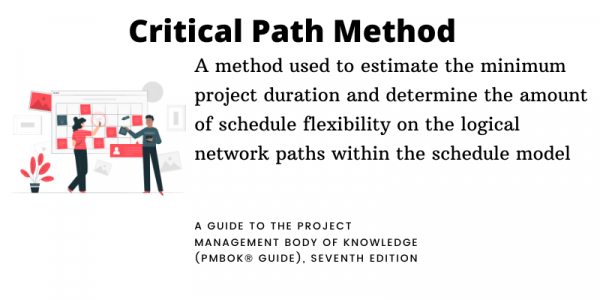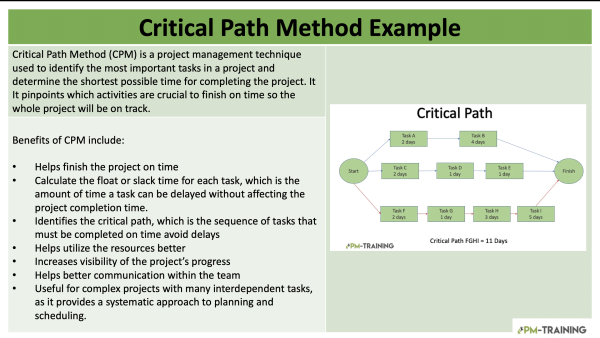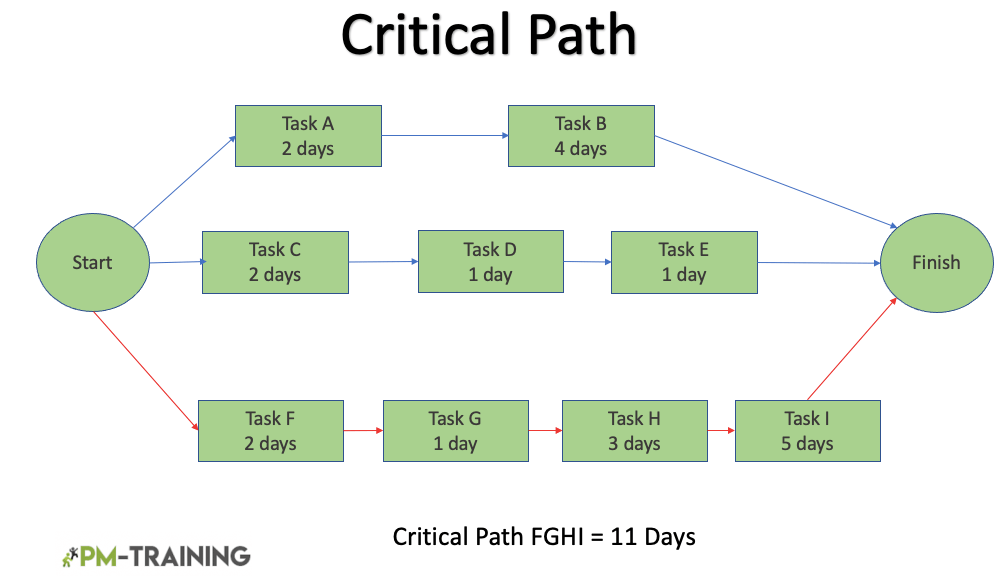When you’re a project manager, the last thing you want to happen is for your project to get delayed. After all, delays can impact not just your project’s timeline but also your budget and quality. Following the project timeline is challenging, but it’s not impossible to do. You need to be extra careful in monitoring the project’s progress and schedule using the right tools and methods.
One of the most popular scheduling methods today is the critical path method (CPM). In this blog post, we’ll discuss the fundamentals of CPM, its benefits for project managers, and how to use it to have a successful project.
What is the Critical Path Method (CPM)?
Developed in the late 1950s by James E. Kelly and Morgan R. Walker, the critical path method determines the project’s critical path by considering the activities’ durations, sequences, and connections.
CPM establishes the entire timeline for the project. It pinpoints which activities are crucial to finish on time so the whole project will be on track. This step-by-step approach to project management is widely used in many industries and has proven to help minimize project delays.

Why is Critical Path Method Scheduling Important for Project Managers?
Helps finish the project on time
By understanding the dependencies among activities and considering their durations, project managers can better plan their project’s progress. This way, you can ensure that no activity is delayed, potentially impacting the entire project. This is also helpful in software engineering projects.
Reduces risks of delays
A clear understanding of the project’s timeline and activities allows you to spot which activities will not finish on time efficiently. Through this, you can take the necessary actions to avoid or mitigate these risks. For instance, you can add more resources to activities that are at risk of being delayed.
Helps utilize the resources better
CPM can also help you better utilize your resources because it considers the duration of activities. By understanding how long each activity will take, you can allocate your resources (e.g., workforce, materials) to different tasks more efficiently. You can avoid having too much or too few resources for specific activities.

Increases visibility of the project’s progress
The critical benefit of CPM scheduling is that it increases the visibility of the project’s progress, which can help to identify potential problems and delays early on. In addition, CPM scheduling provides a clear picture of which activities are most likely to cause bottlenecks.
Helps better communication within the team
CPM can also help you improve communication with your team by providing a clear picture of the project’s timeline and progress. By understanding the different tasks and their dependencies, you can easily explain to your team members what needs to be done and when. Team members will not be confused regarding the project’s tasks and objectives.
How to Find Your Project’s Critical Path?

Determine all project activities
Use the work breakdown structure to map out all tasks included in the project. The list should only contain higher-level activities; otherwise, the critical path analysis will be too complicated to manage efficiently.
Identify the main deliverables first, then break them down into smaller chunks of tasks. You use a tree structure or tables, but an outline is the easiest way to create the work breakdown.
Identify dependencies of tasks
Some project activities are dependent on the completion of other tasks. You can easily determine the completion order by identifying the immediate action that must come before each task. You can use the questions below as your guide:
Which activity should happen first before this task?
Which tasks should be completed at the same time as this activity?
Which activity should happen after this task?
Use your discretion and gather feedback from team members to help you define task dependencies correctly. Failing to do this will make the critical path method obsolete.
Do the critical path diagram
A critical path analysis chart, or network diagram, is a visual timeline of your activities based on their dependencies. In the past, network diagrams were hand-drawn, but now there are software programs that can do it for you.
A network diagram has boxes with tasks and responsibilities, arrows mapping the schedule, and the sequence of the activities that must be completed. Project managers use it to track the progress of each activity.
Create timelines
Using the data from past projects or information from experienced team members, you need to know the estimated time required to complete each task. You can likely finish more minor activities in days, while complex projects may take weeks.
Identify the project’s critical path
You can do that by identifying the longest path throughout the network based on the duration of days and using the Forward Pass/Backward Pass technique to determine each task’s earliest and latest start and finish.
The project schedule is considered sensitive if there are multiple critical paths. It means the critical path will most likely change when the project starts.
Update the critical path
You will see the actual activity completion times as the project progresses. You can update the network diagram to include this data. Constantly recalculating your network diagram with new info gives you a more precise critical path. It allows for a more realistic view of the project’s completion date.

When is the Best Time to use CPM scheduling?
The CPM plan works best for complex projects with numerous stakeholders who must be informed of the project’s overall goals. Risk management, cash flows, and communication are the three most significant advantages.

Tips for Using CPM Scheduling
- Reflect on all the activities involved in the project.
- Do not include activities with no logic or implications to the project.
- Properly allocate the resources to all activities
- Set realistic timelines. Avoid setting too many deadlines for each task.
- Ensure that the schedules are aligned with the execution strategies.
- Create a logical sequence and links for the tasks.
- The critical path should be valid and should make sense.
- Define your project’s baseline
Project scheduling might be an additional workload for project managers, but doing so can avoid delays and save the project a lot of money in the long run. By understanding the critical path and its related concepts, you can complete your project on time and within budget.
The critical path method of scheduling is a powerful tool for managing complex projects. When used correctly, you can determine the validity of your project timelines and executions. The CPM plan is the way to go for more efficient and accurate project scheduling.
